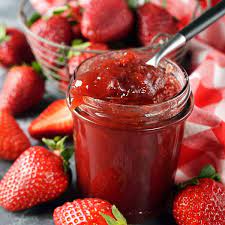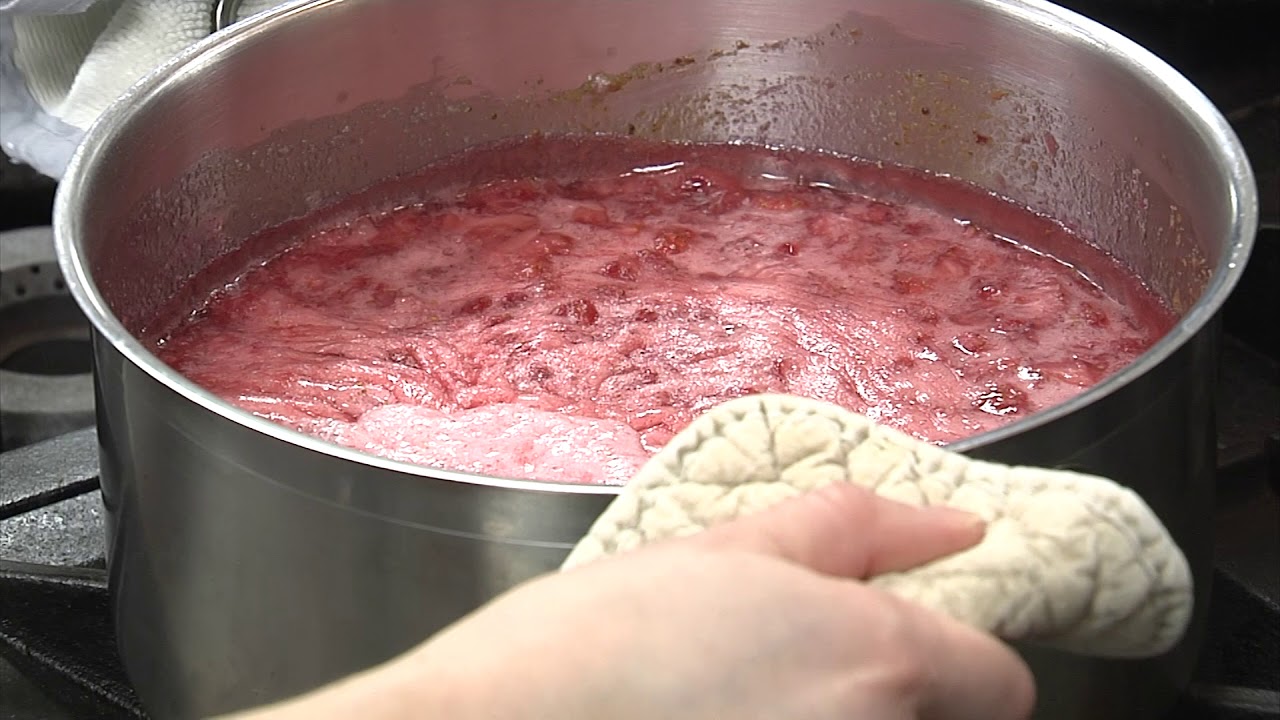
Looking to reduce sugar in your diet without sacrificing flavor? Homemade low-sugar jam offers the perfect solution, turning your favorite fruits into a guilt-free treat. With just a few simple ingredients and easy steps, you can enjoy the sweet taste of jam, minus the extra calories.
Why Choose Low-Sugar Jam?
With the growing concerns over sugar consumption and its link to various health issues, including obesity and diabetes, low-sugar jam has become an increasingly popular choice. Unlike traditional jams, which are often packed with high amounts of sugar and preservatives, homemade low-sugar versions offer a healthier alternative while still preserving the natural sweetness of fruit. Many people are surprised to learn that making jam with less sugar doesn't sacrifice flavor.
In fact, reducing sugar can enhance the natural fruit flavors and give the jam a more vibrant, fresh taste. Additionally, low-sugar jams allow for more versatility in recipes. For those looking to take it a step further, sugar-free jamsoffer an even healthier option, eliminating any added sugars and relying solely on the natural sweetness of fruit.
Ingredients
- Fresh or Frozen Fruit: Choose fruit that is ripe and full of flavor. Popular choices include strawberries, blueberries, raspberries, and peaches. You can also use seasonal fruits like apricots or plums. Frozen fruits work just as well if fresh ones are unavailable.
- Low-Calorie Sweeteners: To keep the sugar content low while maintaining sweetness, opt for natural sweeteners like stevia, monk fruit, or erythritol. These alternatives won’t spike your blood sugar levels and are available in most grocery stores.
- Pectin: Pectin is a naturally occurring substance in fruit that helps the jam set. It’s essential for achieving the right consistency in low-sugar jams, as sugar also plays a role in the thickening process. You can use fruit pectin, which comes in various forms, including liquid or powder.
- Lemon Juice: Lemon juice acts as a natural preservative and helps balance the sweetness of the fruit and sweetener. It also provides a bright, tangy flavor that complements the jam.
Optional Ingredients:
Vanilla or Cinnamon: For added depth of flavor, you can add a dash of vanilla extractor ground cinnamon. These spices pair wonderfully with berry-based jams, providing a unique twist to your creations.
Directions

How to Make Low Sugar Strawberry Jam
1. Prepare The Fruit
Start by washing and preparing your fruit. If you're using berries, remove the stems and any leaves. For larger fruits like peaches or plums, peel, pit, and chop them into small chunks. You can leave some fruit whole if you prefer a chunkier texture or mash the fruit for a smoother jam.
2. Cook The Fruit
Place the fruit in a large pot over medium heat. Add the lemon juice and stir the mixture occasionally to prevent burning. Allow the fruit to simmer until it softens and releases its juices. This process should take about 10-15 minutes.
3. Add The Sweetener
Once the fruit has broken down, it’s time to add your sweetener. Start by adding a small amount (about 1/2 cup), taste the mixture, and adjust according to your preference. Keep in mind that you can always add more, but it’s harder to take sweetness out once it’s in!
4. Add Pectin
Sprinkle the pectin into the fruit mixture and stir well. Pectin helps the jam set and thicken, especially in low-sugar recipes. For a smoother consistency, you can use liquid pectin. If you prefer a thicker, chunkier jam, powdered pectin works great.
5. Simmer And Test Consistency
Allow the mixture to simmer for 10-20 minutes, stirring frequently. After the jam thickens, test its consistency by placing a small spoonful on a cold plate. Run your finger through the jam, and if it wrinkles and holds its shape, it’s ready to be jarred.
6. Can And Store The Jam
Once the jam has reached the desired consistency, carefully pour it into sterilized glass jars while still hot. Seal the jars and let them cool. For long-term storage, you can process the jars in a water bath for 10 minutes to ensure proper sealing. If not using a canning method, store the jam in the refrigerator for up to 2-3 weeks.
How To Adjust Sweetness And Consistency
One of the main reasons people opt for low-sugar jams is to reduce their sugar intake while still enjoying the natural sweetness of the fruit. However, finding the right balance of sweetness and consistency is key. Here are a few tips for adjusting your jam:
- Sweetness: If you find that the jam isn’t sweet enough, gradually add more of your preferred sweetener, tasting as you go. Remember, the fruit itself will contribute some natural sweetness, so don’t overdo it!
- Consistency: If your jam is too runny, add a bit more pectin and continue simmering. If it's too thick, you can thin it out by adding a small amount of water or fruit juice.
You can experiment with different fruits and sweeteners to adjust the flavor profile and consistency to your liking.
Storage And Shelf Life
To keep your homemade low-sugar jam fresh, proper storage is essential. Here’s how you can store it:
- Refrigeration: Homemade jam should be stored in airtight glass jars in the refrigerator. It can last for up to 3 weeks.
- Freezing: If you make large batches, you can freeze the jam for long-term storage. Simply pour the jam into freezer-safe containers and freeze for up to 6 months.
- Canning: For shelf-stable storage, use a proper canning method to seal your jars. Canned jam can last for up to a year when stored in a cool, dark place.
Creative Ways To Use Homemade Low-Sugar Jam
- Breakfast: Spread the jam on your morning toast, bagel, or English muffin. You can also add it to oatmeal or Greek yogurt for a sweet and healthy boost. For a savory option, try pairing it with Tennessee BBQto complement the smoky flavors with a hint of fruitiness, creating a unique and flavorful combination.
- Baked Goods: Use the jam as a filling for pastries, muffins, or jam-filled tarts.
- Smoothies: Add a spoonful of your homemade jam to smoothies for natural sweetness and extra flavor.
- Desserts: Drizzle the jam over ice cream, pancakes, or cheesecake to add a fresh, fruity layer. For a complete meal, you can also pair it with easy dinner recipesthat incorporate a touch of sweetness, such as glazed chicken or roasted vegetables, for a unique twist on your favorite dishes.
The Pitfall Of Homemade Low-Sugar Jam
While homemade low-sugar jam is a healthier and delicious alternative to traditional jam, there are several pitfalls you should be aware of. Here are some of the common challenges you might face when making low-sugar jam:
1. Consistency Issues
One of the biggest struggles with low-sugar jam is achieving the right consistency. Without sugar, which helps jam set, the mixture can either be too thin or too thick. Overcooking can result in a jam that is too thick, while undercooking can leave you with a runny spread. Using the right amount of pectin and testing the jam frequently during cooking is key to finding the perfect texture.
2. Flavor Imbalance
Low-sugar jam may not taste as sweet as traditional jams, and if you’re using fruit with high acidity, such as cranberries or raspberries, the flavor might seem unbalanced. The natural sweetness of the fruit may not be enough to compensate for the reduced sugar, so you may need to adjust the amount of sweetener you use or mix in fruits that have more natural sugar.
3. Preservation Problems
Because sugar acts as a preservative, homemade low-sugar jams have a shorter shelf life compared to traditional jams. Unless properly canned, low-sugar jams may spoil more quickly. Even with refrigeration, you can expect the jam to last for only 2-3 weeks, so storing it long-term requires a proper canning process. Food safety is importantwhen making and storing homemade jams, so always follow recommended canning guidelines to prevent contamination and ensure a safe, long-lasting product.
4. Challenges With Sweeteners
Using alternative sweeteners like stevia, monk fruit, or erythritol can sometimes lead to a flavor that doesn’t resemble traditional jam. Some sweeteners can have a bitter aftertaste or cause a grainy texture when used in cooking. It’s important to choose the right sweetener for your jam recipe and adjust it to match your flavor preferences.
5. Longer Cooking Time
Since you’re not relying on sugar to help thicken the jam, the cooking time can be significantly longer. Extended cooking can cause the fruit to lose some of its nutrients, or worse, over-reduce, creating a jam that is too intense in flavor or overly thick. Monitoring the heat and stirring regularly is crucial to avoid this issue.
| Nutrient | Amount |
| Calories | 20 kcal |
| Total Fat | 0g |
| Saturated Fat | 0g |
| Trans Fat | 0g |
| Cholesterol | 0mg |
| Sodium | 0mg |
| Total Carbohydrates | 5g |
| Dietary Fiber | 1g |
| Sugars | 3g |
| Added Sugars | 0g (if using a no-sugar-added sweetener like stevia or monk fruit) |
| Protein | 0g |
| Vitamin C | 5% of the Daily Value (DV) |
| Calcium | 0% of the DV |
| Iron | 0% of the DV |
Notes:
- Calories: The calorie count can vary based on the amount of fruit used and the type of sweetener. If you're using fruit that is naturally high in sugar (like mango or peaches), the calorie count might be higher.
- Sugar Content: The sugar content will primarily come from the fruit itself. If you’re using a sweetener like stevia or monk fruit, there will be no added sugar in the recipe.
- Fiber: Fruit, especially berries, are rich in dietary fiber, which contributes to the fiber content in the jam.
- Vitamins and Minerals: Depending on the fruit, your jam could also provide small amounts of vitamin C, potassium, and iron.
Tip:For the most accurate nutritional information, consider using a nutrition calculatoror consulting with a registered dietitian, especially if you’re using specific types of sweeteners or fruits.
FAQs
How Do You Make Low-sugar Jam Without Pectin?
You can make low-sugar jam without pectin by using fruit that is naturally high in pectin, such as apples, citrus, or berries. Simmer the fruit until it reaches your desired consistency, then add a natural sweetener like stevia or monk fruit for sweetness.
Can Homemade Low-sugar Jam Be Made With Frozen Fruit?
Yes, you can make homemade low-sugar jam with frozen fruit. Just make sure to thaw and drain the fruit before cooking it to remove excess moisture, which can affect the consistency of your jam.
How Long Does Homemade Low-sugar Jam Last?
Homemade low-sugar jam typically lasts for 2-3 weeks when stored in the refrigerator. If you want to extend its shelf life, can the jam following proper preservation techniques, allowing it to last up to a year when sealed in sterilized jars.
Is Homemade Low-sugar Jam Healthier Than Store-bought?
Homemade low-sugar jam is generally healthier than store-bought versions, as it contains less sugar and more natural ingredients. You also have control over what goes into the jam, making it a customizable and nutrient-rich option.
How Can I Make My Homemade Low-sugar Jam Sweeter Without Adding Sugar?
You can sweeten your homemade low-sugar jam using natural sweeteners like stevia, monk fruit, or erythritol. Start with small amounts and adjust to taste to avoid over-sweetening your jam.
Conclusion
Homemade low-sugar jam is a delicious and healthier alternative to store-bought versions, offering all the flavor you love without the added sugar. By following the right techniques and using fresh ingredients, you can create a spread that satisfies your sweet tooth and supports your wellness goals.

